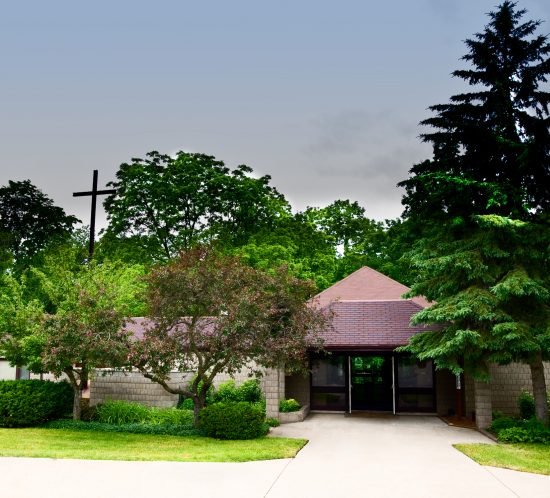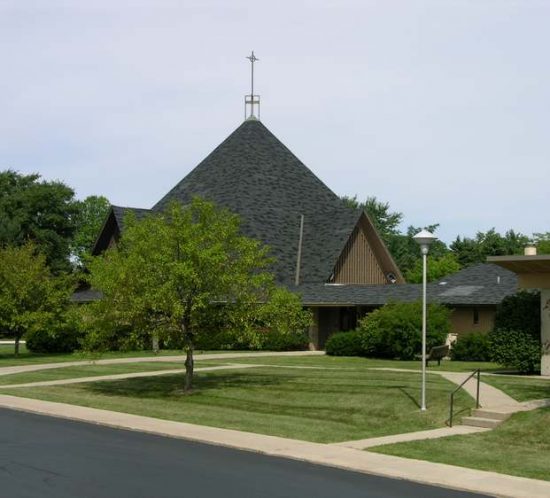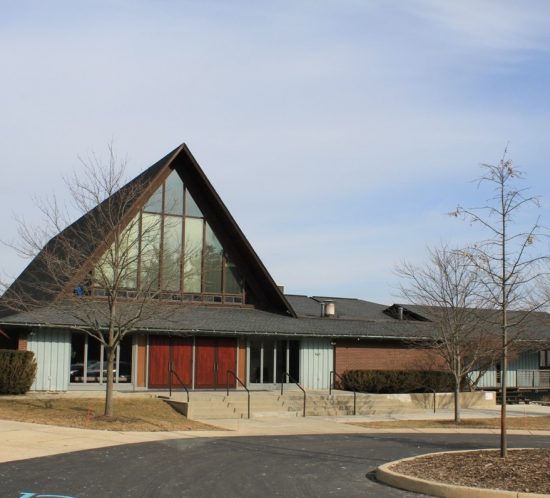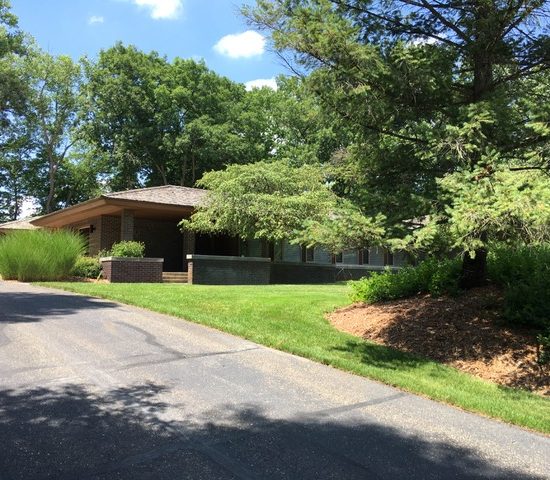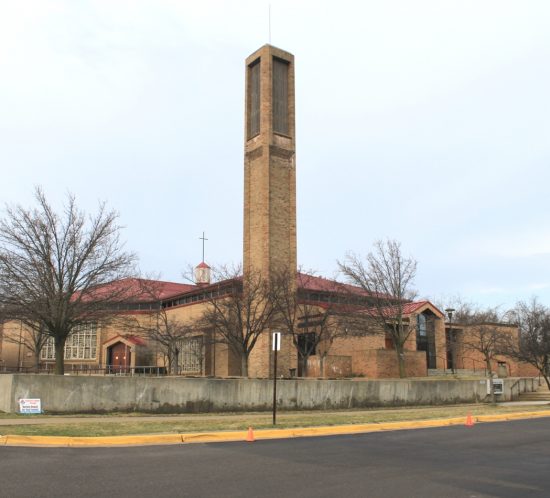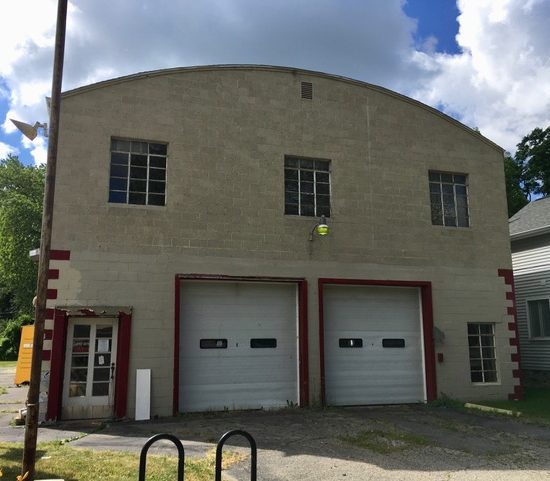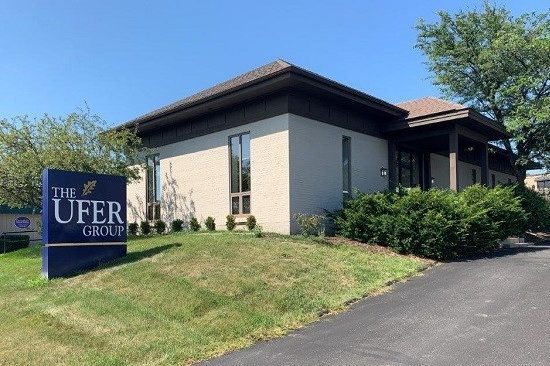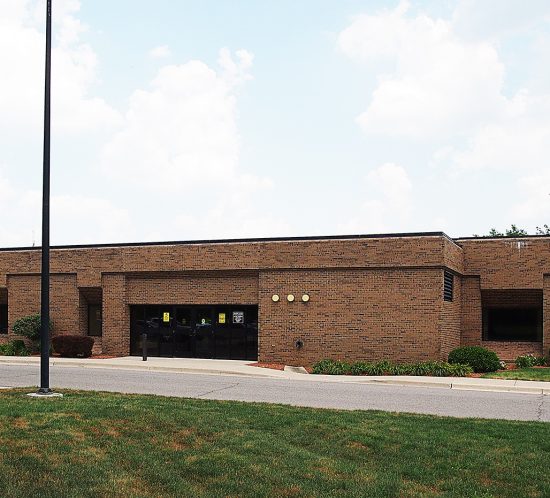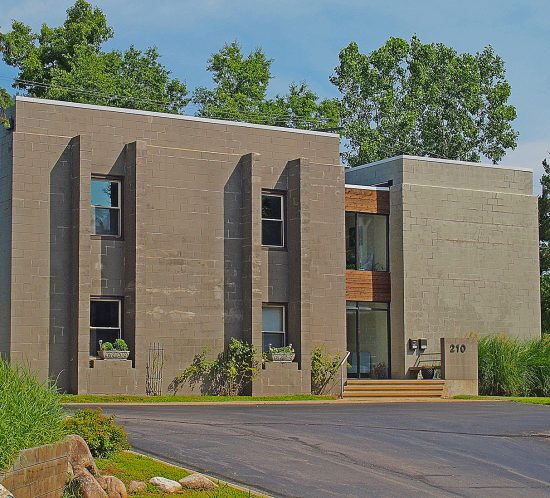James Wong

James Wong (1925-2019)
During his 50 years of practicing architecture, James Wong designed some of Ann Arbor’s most notable churches, including St. Francis of Assisi, Westminster Presbyterian, Glacier Way United Methodist Church, and Ann Arbor Christian Reform. His other work –- public, commercial, and residences — also show the careful thought he gave to their use and appearance. They have in common a simplicity mixed with elegance. “He said he enjoyed every one of his clients and projects,” says his widow Lin Wong.
Explaining the wide range of his work, Wong was quoted in a 1984 Ann Arbor News article “I try not to turn down any project. When people are seeking architecture service, part of our role, and responsibility, is to talk to everyone.” He made a conscious decision to keep his practice small so he could stay in Ann Arbor and raise his and Lin’s four children. His daughter, Therese, is a practicing architect, something he applauded beyond a normal proud father, having long thought there were not enough women in the field.
Wong was born in Buffalo, New York, in 1925, of parents who were very active in the Chinese American community. In 1942, at age 17, he enlisted in the U.S. Navy and fought in the battles of Guadalcanal, Okinawa, Saipan, Tinian, and Iwo Jima. He photographed the destruction of Hiroshima four days after the dropping of the atomic bomb. A battle scar he brought home was a significant loss of hearing due to the loud noises he had experienced.
Wong attended the University of Michigan on the G.I Bill, graduating with a B.S. in Architecture in 1954. His first job was as a draftsman for Douglas Loree. He opened his own practice, James P. Wong and Associates, in Ann Arbor in 1957. He was the first “ethnic architect,” as he called it, in the area.
He served as an adjunct professor at the A. Alfred Taubman College of Architecture and Urban Planning at the University of Michigan, and as president of the Huron Valley Chapter of the American Institute of Architects. He took great joy in mentoring young architecture students and professionals.
Major Jobs
Ufer Group, 2349 E. Stadium. 1960. Like many of his trademark buildings, this is a simple design with elegant details.
Unitec Construction Co, 210 Huronview, c. 1960. Concrete and cement block building suggests the company’s vision. Now the office for the Ann Arbor Summer Festival and a realtor.
Christian Reform Church, 1717 Broadway, 1961. Wong got this project from a classmate who was a member of this church but not yet a registered architect. Wong designed the sanctuary and the education wing. He set the standard he would follow in his future church projects, “studying the essence of the church, their basic belief.” In this case, he decided a simple design without a lot of iconography was called for. The stained glass windows were the only decorative item. The rest he kept fairly austere, with arching structural beams, stained to go with the glass, and subtle color throughout.
Lamp Post Plaza; 2366 E. Stadium Blvd., 1962. Originally for Wrigley’s grocery chain as the main tenant, now Trader Joes.’ This was the first strip mall in Ann Arbor. Wong had his own office on the west side of the mall, at 2378 E. Stadium, on the basement level which took advantage of a hill so that it was above ground on one side. Several other architects, including Larry Brink and Al Paas, had offices there.
Veterans’ Memorial Park Shelter, 1963; demolished. In the 1960s the Ann Arbor Park Commission was spreading the commissions for park shelters among local architects such as Robert Metcalf and David Osler as well as Wong.
Alpha Phi Gamma addition, 707 Oxford, 1966.
Mary Mitchell School addition, 3350 Pittsview Drive, 1967.
St. Francis of Assisi, 2250 E. Stadium, 1969. Wong’s own parish, he was originally asked to consult, but when Pietro Belluschi declined the job he recommended that Wong be the architect. Prior to this, the church had been holding services in the gymnasium connected to St. Francis School. Wong was delighted with the commission, saying, “It was bigger than anything I did.” Occupying a prominent place on Stadium, it is one of the most memorable churches in Ann Arbor. St. Francis is often the performance site for the University of Michigan Musical Society concert performances.
Even though it is the largest Roman Catholic Church in Michigan with seating for 1,200, the high ceilings and light wood used throughout give it an open feeling that makes it less intimidating. The lectern is open to the congregation, following the dictates of Vatican II.
The stained glass windows are made with faceted glass, which is one-inch thick and thus reflects light differently. St. Francis and Holy Trinity Lutheran Church at Concordia are the only two congregations in Ann Arbor using this type of glass. As part of the project, Wong went to France to consult with Gabriel Loire, the inventor of faceted glass, which he had used in Le Corbusier’s Chapel in Ronchamp. Wong and Lin included some of Loire’s work in their own house which they built a few years later.
Westminster Presbyterian Church, 1500 Scio Church, 1969. A tall roof, 50 feet above ground, emphasizes Christian worship. Inside, attention is focused on the lectern with no barriers between it and the congregation. The décor was kept simple with laminated wood arches, stained glass, and a small pipe organ.
Lin and James Wong residence, 3550 East Huron River Drive, 1971. Almost 3,000 square feet, it is light brick with large recessed window, a deck on the second floor on the main façade, and a recessed off center doorway.
Entry Lobby to First Baptist Church, 517 E. Washington, c. 1970. Not only the entry from the parking area, but a statement that modernization and access can renew the classic and traditional.
Glazier Way United Methodist Church, 1001 Green Road. 1975. About 1995 it changed to the Greenwood United Methodist Church. Set back from the road with windows on three sides of the sanctuary, in the fall months it offers, according to their web site, “a spectacular display of changing foliage.”
St. Mary’s Catholic Church addition, Chelsea, 14200 Old U.S. 12, 1976. Wong designed a chapel on either side of the church’s altar and a bathroom next to the one on the south side. In 1978 he designed the rectory.
University of Michigan Credit Union, 333 E. William, 1980. A neat and simple design of light brick and large recessed glass openings, it is often compared to Bauhaus buildings.
Ypsilanti Water Treatment Plant, 2777 State Street, Ypsilanti. In 1982 Wong was awarded Outstanding Design Achievement by the Engineering Society of Detroit. A straightforward design made interesting by the use of windows embedded in the building.
Northfield Township Fire Station, 75 Barker Rd. Whitmore Lake, early 1980s. A simple cement block structure, like the water treatment plant, it is made more interesting with clever detailing. The roof is rounded and the windows consist of glass squares three across and five up. The cement block is painted ivory with red (of course) accents around the garage doors and on the edge of the building. Now empty, it was most recently a Kiwanis storage spot.
The Newton Office Building, 2160 South Huron Parkway (formerly 3175 Professional Drive) 1981. Originally an office for Kelley Newton, an Ann Arbor realtor, Wong also designed an office for himself in the building, moving from Lamp Post Plaza.
Helmut Stern residence, 4989 Red Fox Run, Matthaei Farms, about 1989
Edward Bick residence, 2969 Hickory Lane, Ann Arbor, 1992.
Robert and Suzanne Ferguson residence, 14389 Island Lake Road, Chelsea, 1995
Elizabeth and Victor Douvan residence additions, 2014 Devolson near Brockman Blvd., various jobs included adding a dining room and sun room.
Transplantation Society of Michigan, 2203 Platt Rd., Ann Arbor 1995. Laboratories, organ storage, and offices. “Jim enjoyed participating in the visionary futurism of this science,” says Lin Wong.
Wennersten Dental Office, 75 Scio Church Rd, 1998. A transformation from an unused Comerica Bank to a dental practice. Located on a hill on a corner lot, the building is noted for its sunflowers planted on both banks.
Unfortunately, a lot of Wong’s buildings have been torn down or altered beyond recognition. He also did many smaller projects, not listed, of which Lin Wong says “Jim’s career and life were bookmarked by the other numerous small additions — kitchens, family rooms, carports, storage buildings — that gave him much human experience and engagement that enabled his optimism and love of the city.”
By Grace Shackman

